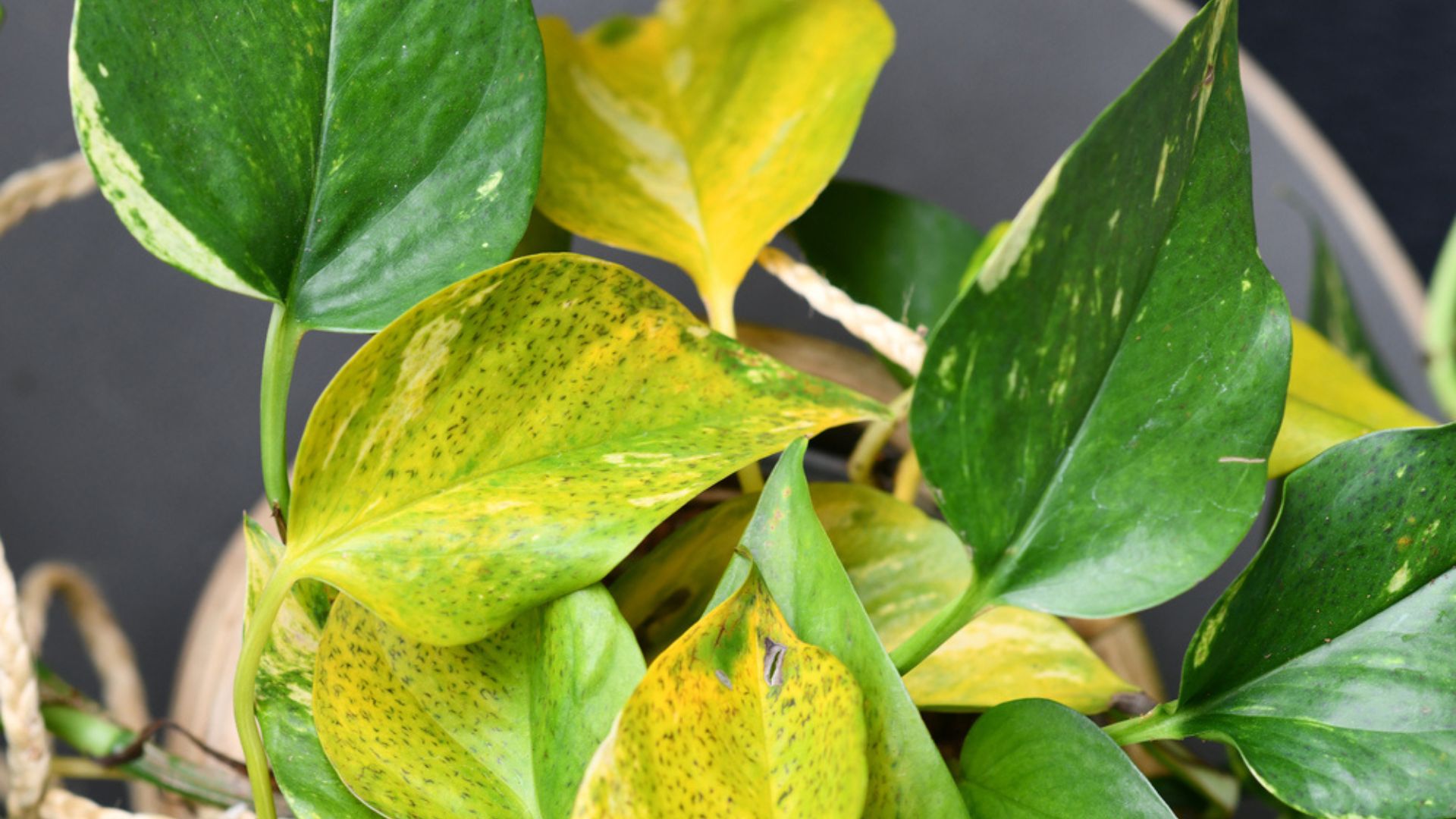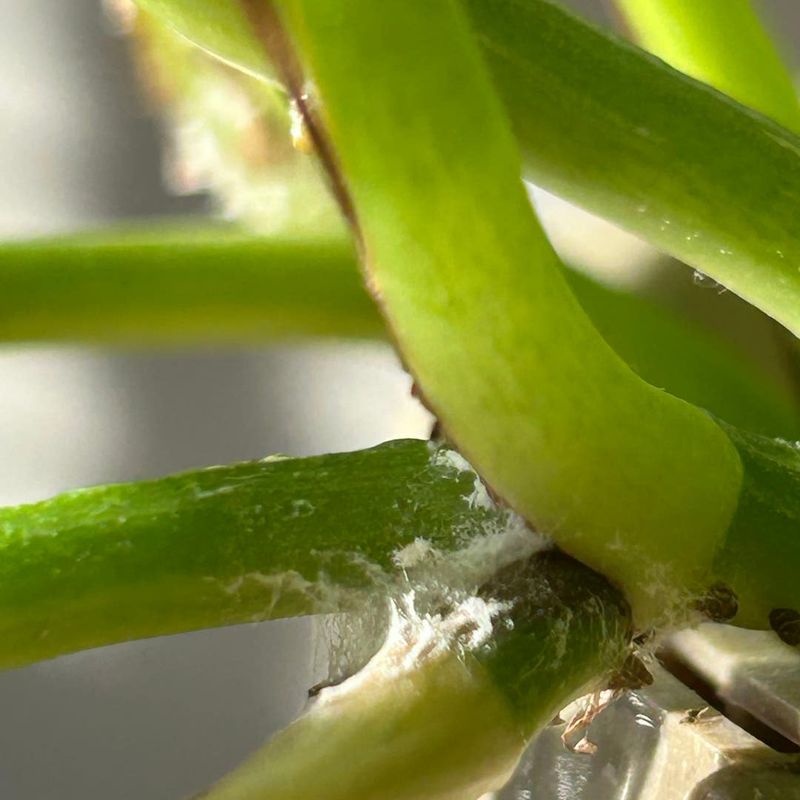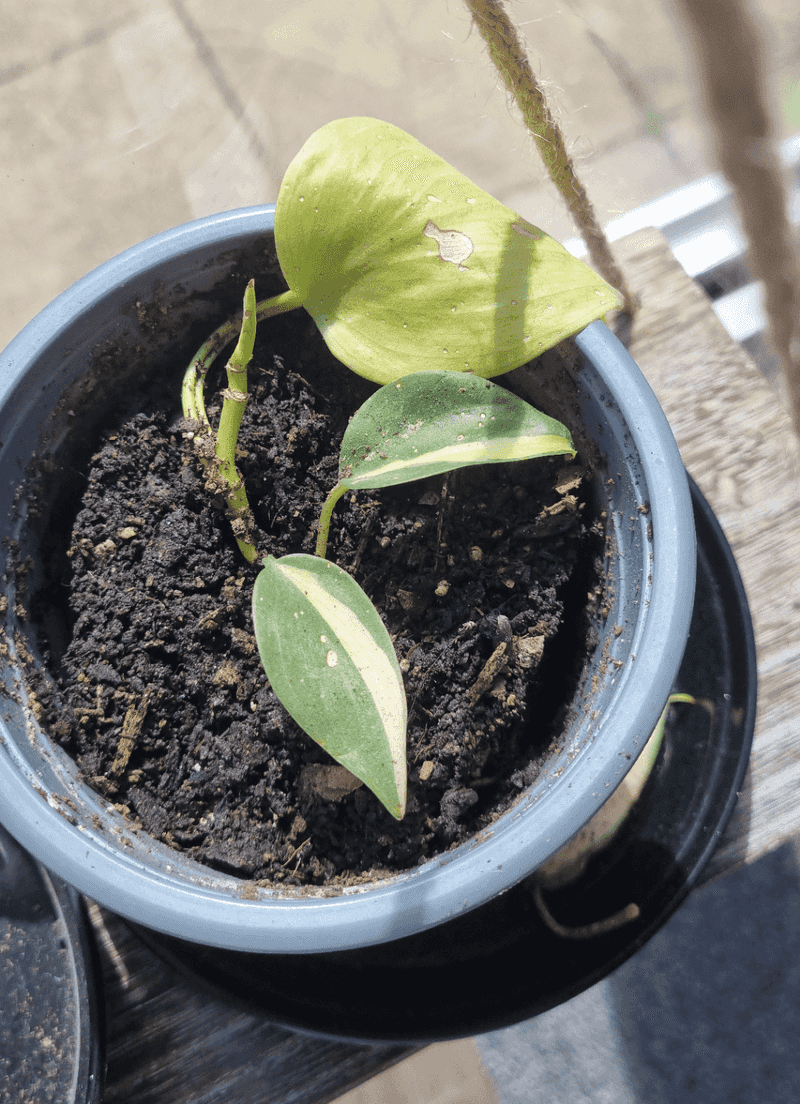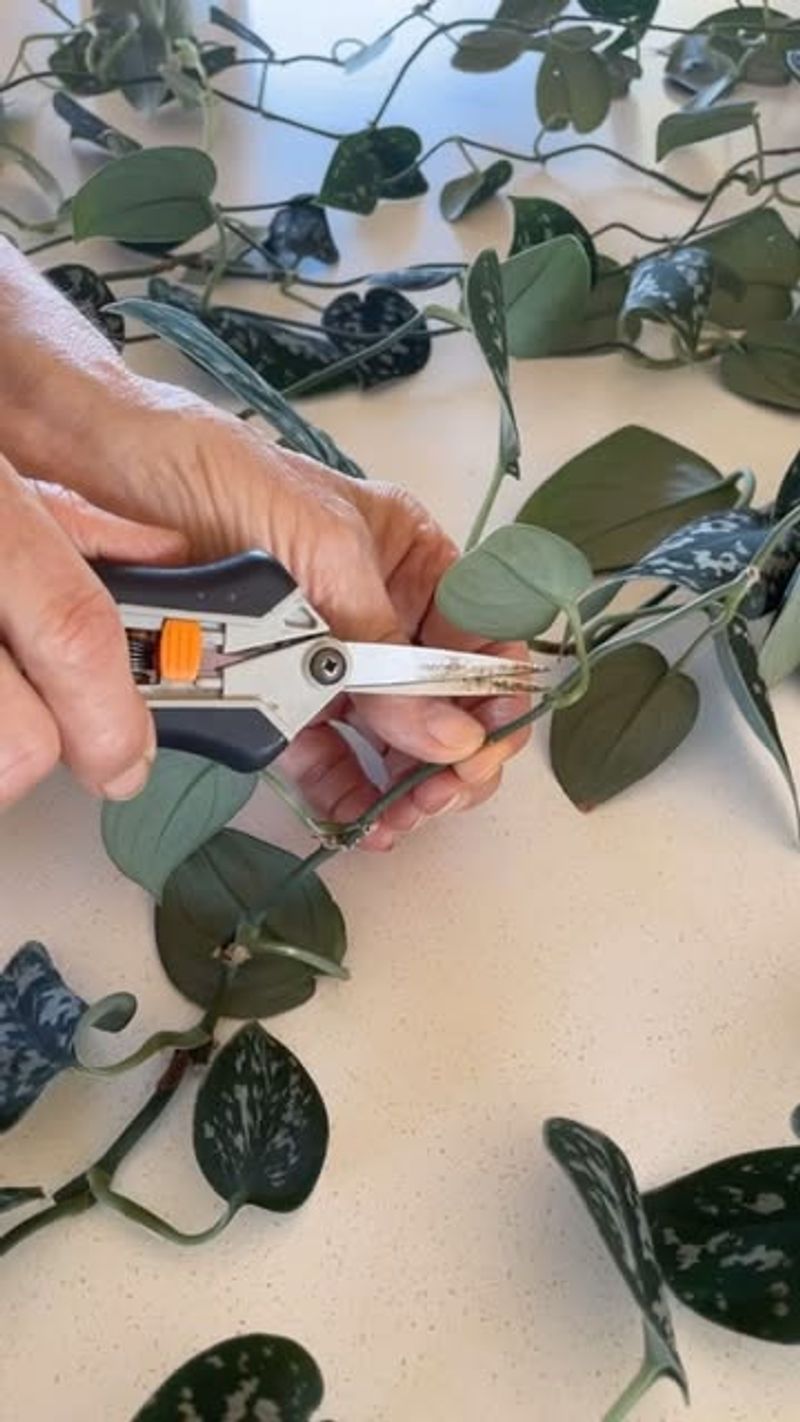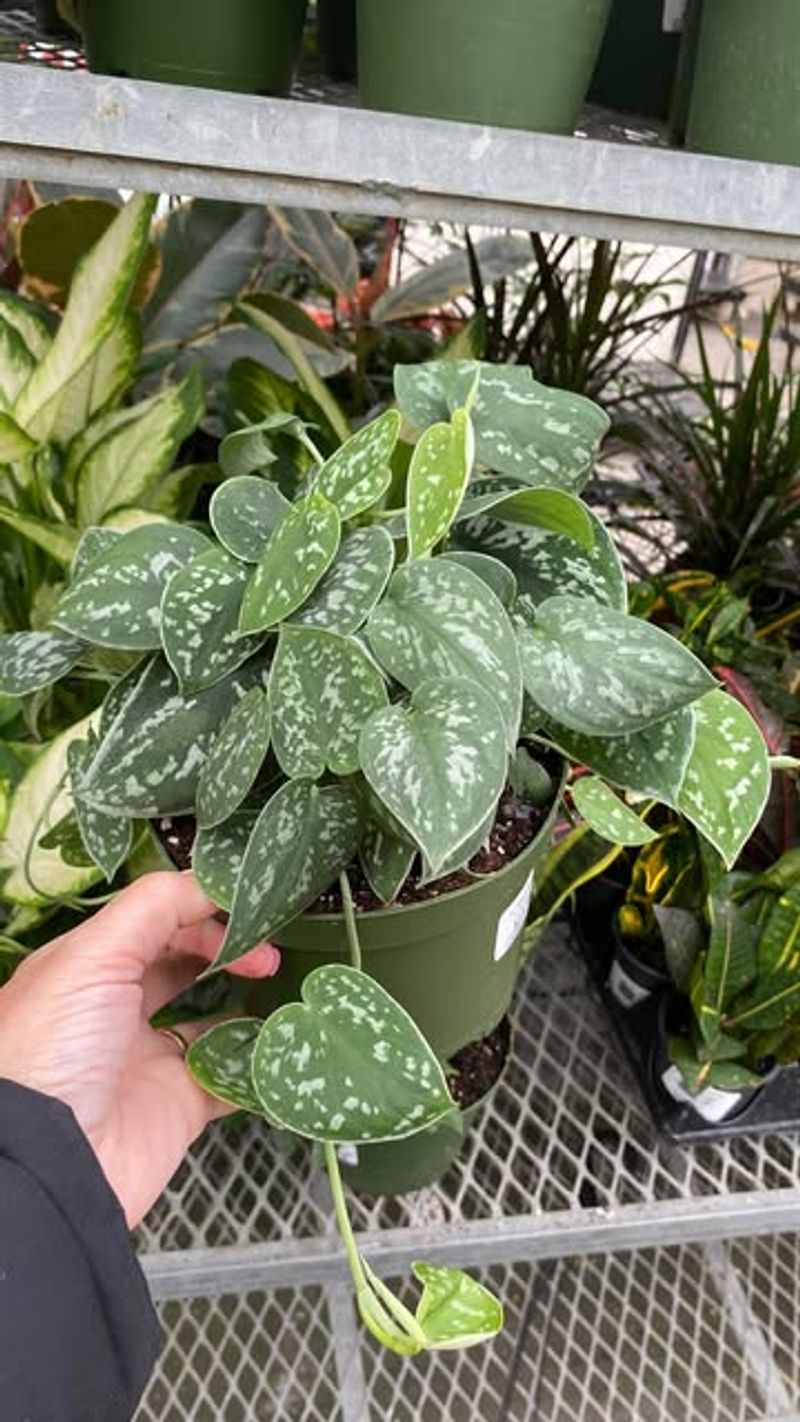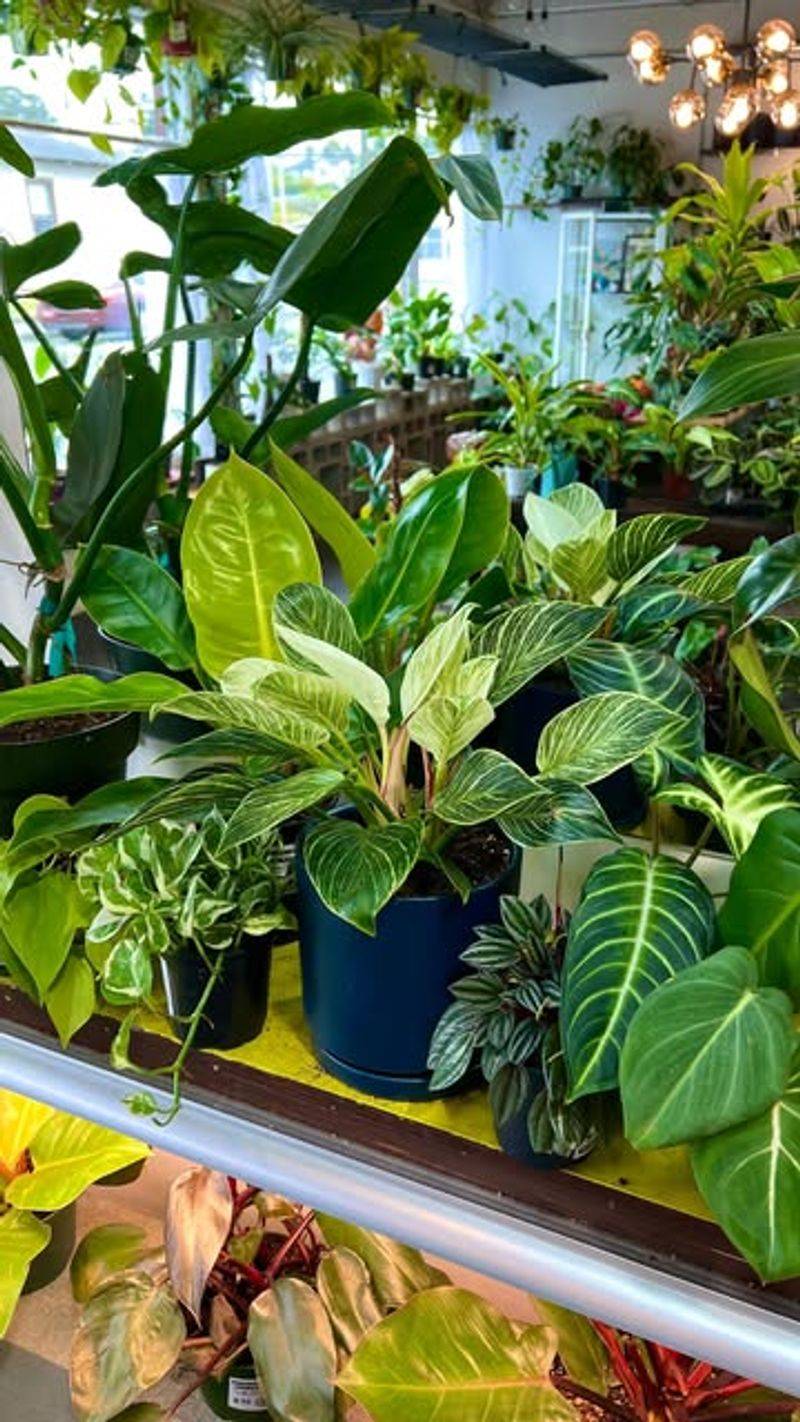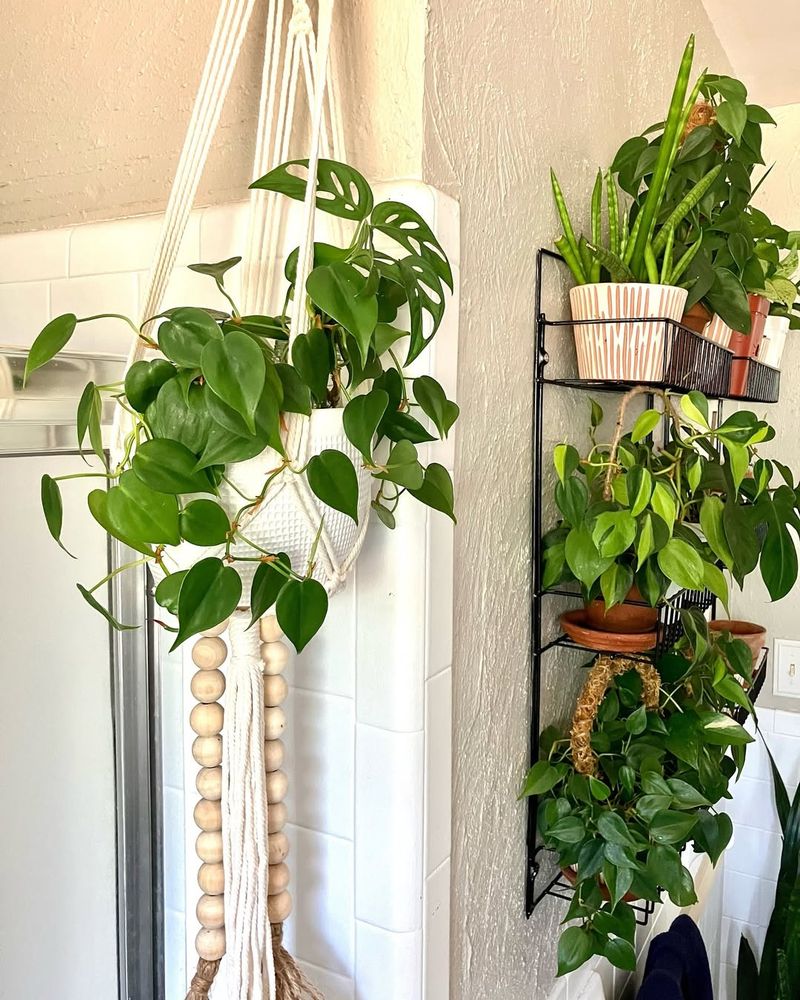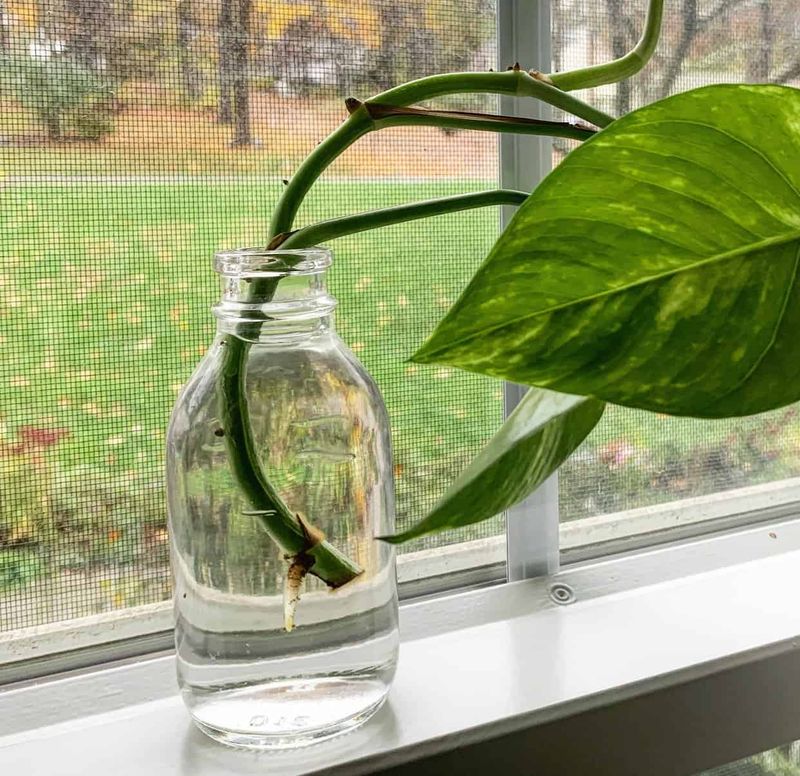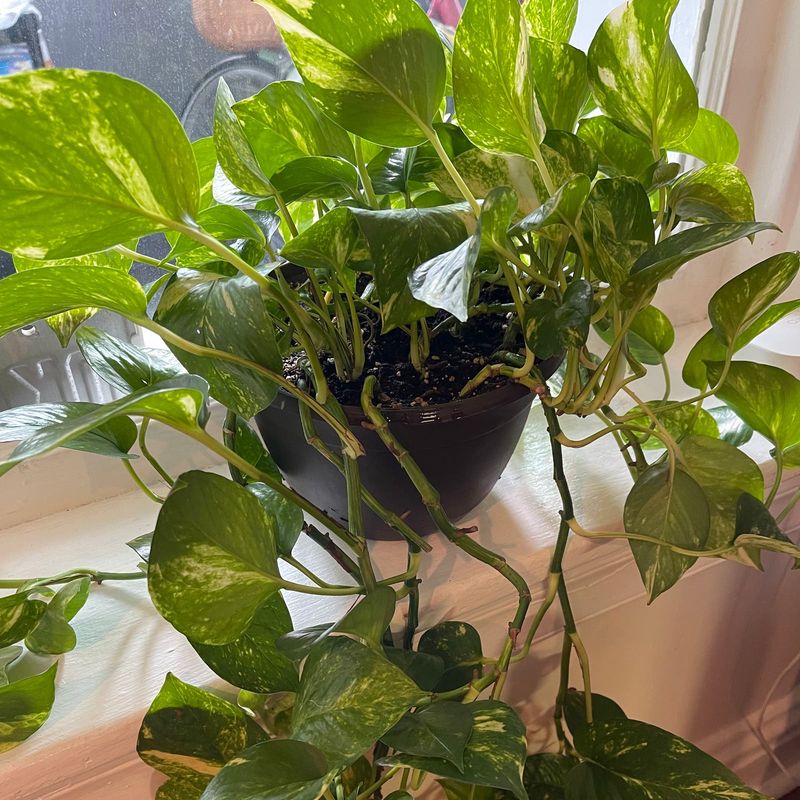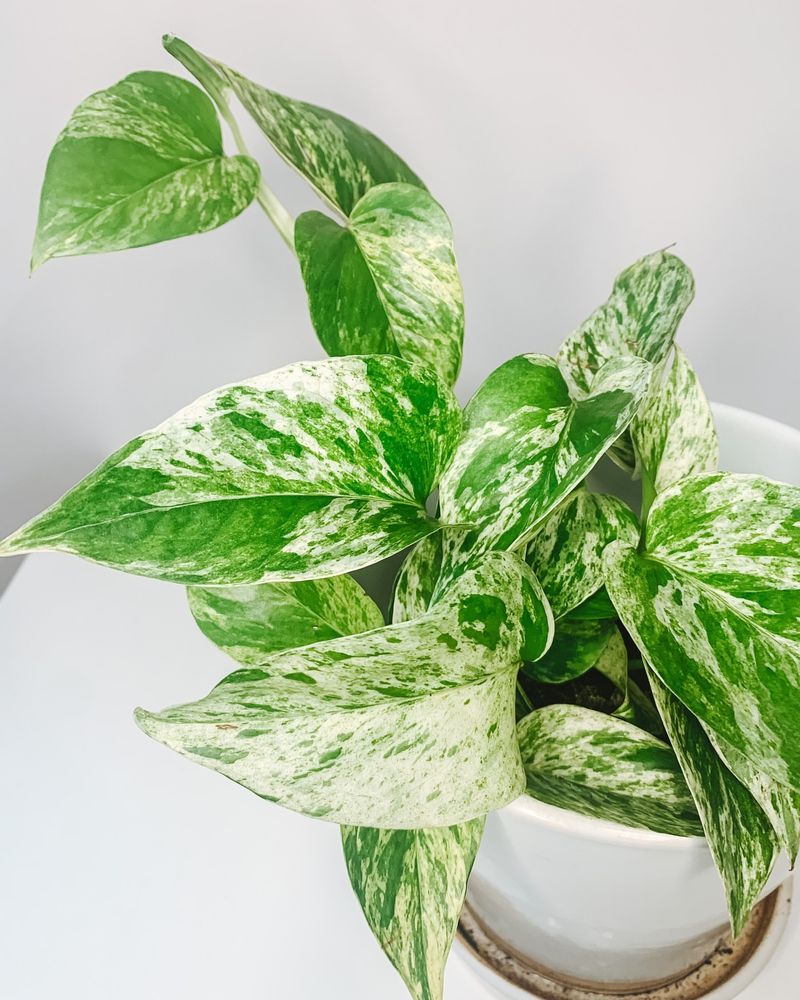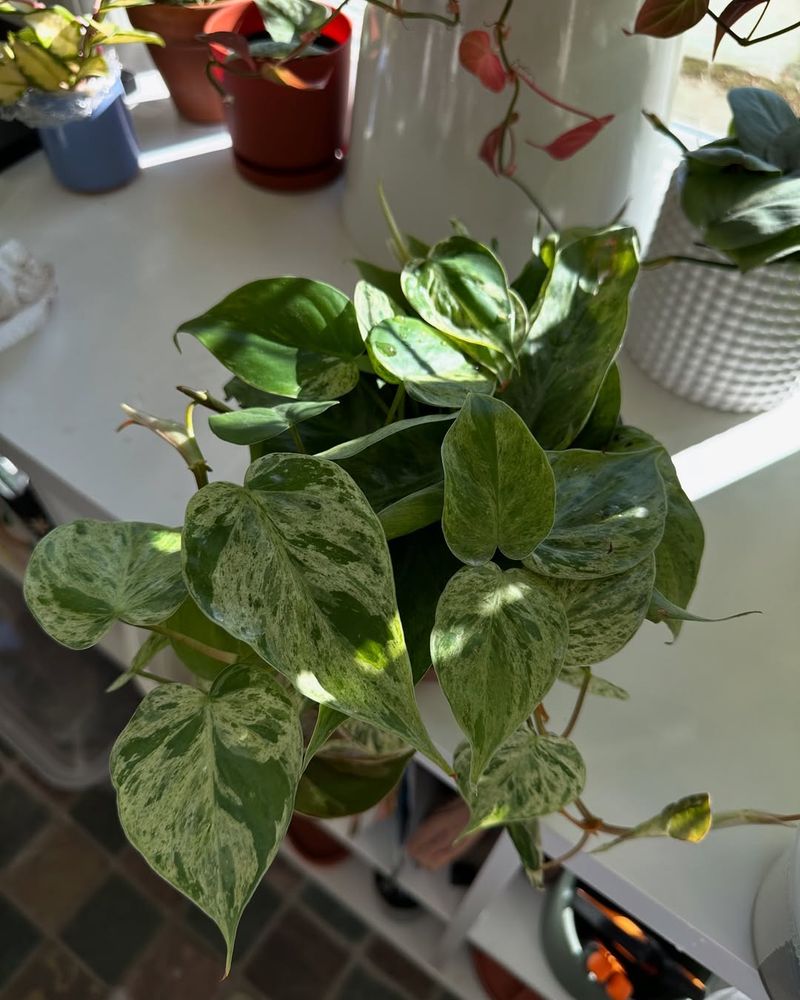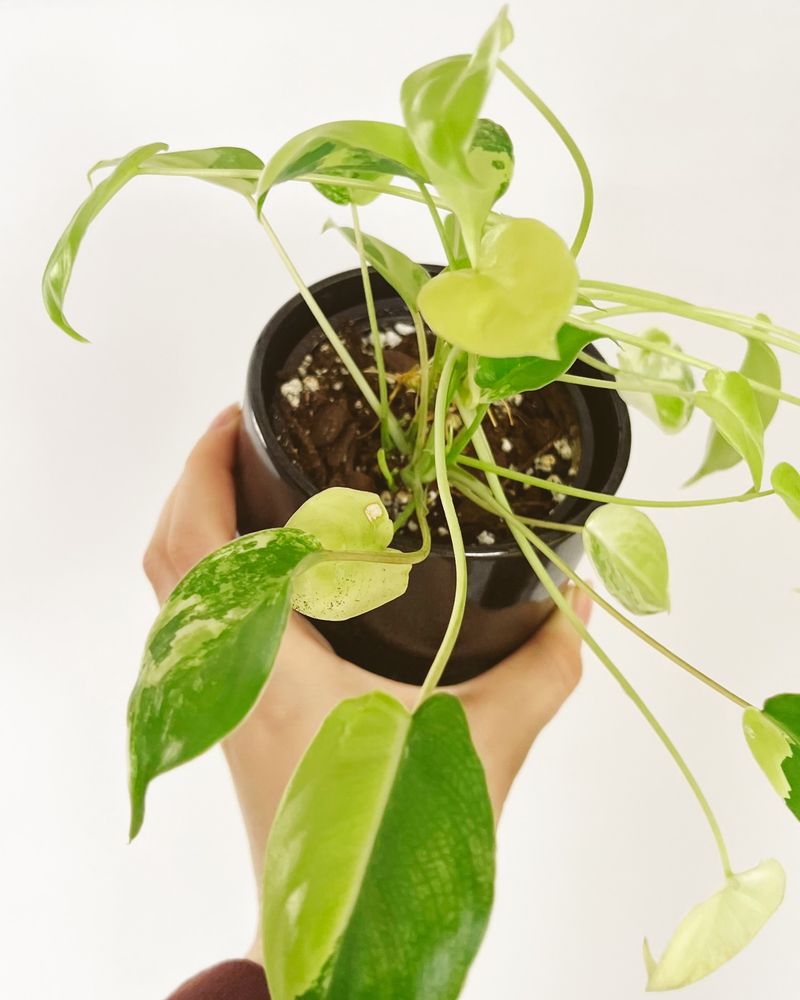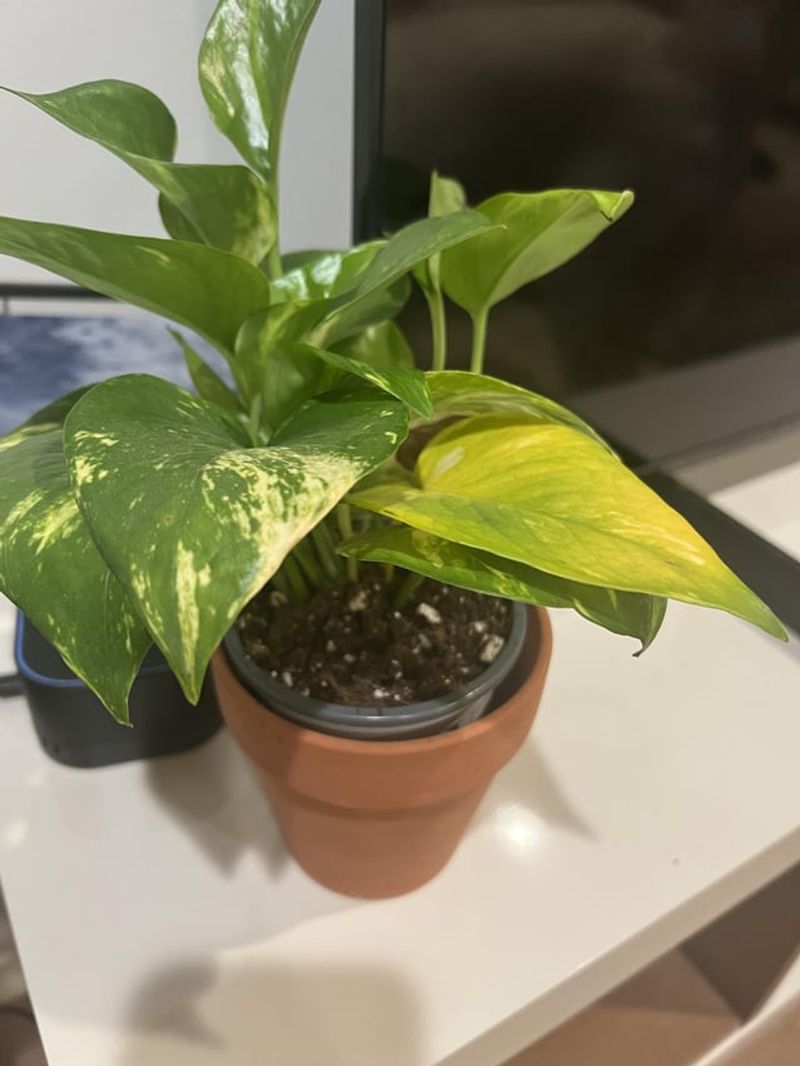Pothos plants, with their lush, trailing vines, are a favorite among houseplant enthusiasts. However, these resilient plants can suffer if not cared for properly. Understanding common mistakes in their care can help your pothos thrive and bring more green into your life.
1. Overwatering Issues
Overwatering is a common mistake with pothos care. When the soil stays too wet, the roots can’t breathe, leading to yellow leaves. Watch for drooping leaves as a sign.
Instead, water only when the soil feels dry to the touch. Keeping a balance is key. An occasional check ensures healthy roots. If you’re unsure, it’s better to slightly underwater than overwater.
This gives the plant a chance to recover. Pay attention to drainage holes, and always empty saucers to prevent water buildup. Remember, the pothos prefers a little dryness over too much water.
2. Lack of Light
Position matters for pothos growth! Placing the plant in low light can stunt its growth. Pothos enjoys bright, indirect sunlight.
If it sits in a dark corner, the leaves might become smaller and fewer. Notice how the plant reaches for light. Moving it closer to a window can help. Balance is crucial, as direct sun can scorch the leaves.
Try to mimic its natural habitat’s lighting. If natural light is limited, consider using artificial grow lights. These adjustments can promote lush, full foliage. With the right light, a pothos truly shines.
3. Ignoring Pests
Tiny invaders like spider mites and aphids can wreak havoc on your pothos if left unchecked. Keep a close eye on the leaves—sticky residue, yellowing, or fine webbing are often the first signs of trouble. At the first hint of pests, jump into action!
A quick treatment with insecticidal soap or neem oil can work wonders, especially when paired with natural pest-prevention strategies. Boosting humidity helps keep pests at bay, and regularly wiping down the leaves not only keeps them clean but also removes any lurking bugs.
Consistent care and early detection are your best defense. Remember, a healthy pothos is a strong pothos—vibrant, resilient, and far less inviting to unwanted guests. Your attention makes all the difference!
4. Using the Wrong Soil
The right soil mix is key to a thriving pothos. Heavy, clay-like soil holds too much water and can quickly lead to root rot. Instead, go for a well-draining potting mix—adding perlite or sand can boost airflow and drainage, giving roots room to breathe.
Pay attention to how your plant responds; good soil should deliver water and nutrients efficiently. Think of it as giving your pothos the perfect home.
When repotting, always check your mix—healthy roots start with the right foundation. And happy roots? They mean a lush, flourishing plant.
5. Neglecting Pruning
Pruning is a vital part of keeping your pothos healthy and full. Without regular trims, vines can grow leggy and sparse, losing that lush look we all love.
Snipping your plant encourages bushier, more vigorous growth and helps maintain its shape. Always use clean scissors and cut just above a leaf node to spark fresh new vines. Don’t shy away from the shears—pruning not only tidies things up but also promotes overall health.
Removing dead or yellowing leaves gives your plant a fresh start. It’s a simple habit with big rewards, turning a scraggly pothos into a vibrant showstopper.
6. Skipping Fertilization
Skipping fertilization can leave your pothos looking pale and underwhelmed. To keep those leaves vibrant and strong, feed your plant with a balanced houseplant fertilizer every couple of months.
During active growing seasons—like spring and summer—it’s a good idea to fertilize a bit more often. Just be sure to dilute the fertilizer according to the label to avoid burning the roots.
Too much of a good thing can backfire! It’s all about balance. With proper nourishment, your pothos will reward you with lush, green growth. After all, a well-fed plant is a happy, thriving one.
7. Improper Pot Size
Choosing the right pot size is more important than it seems. A pot that’s too small can cramp your pothos, with roots sneaking through drainage holes as a cry for help. When that happens, it’s time to upgrade—just go a size up to give the roots room to grow without overwhelming them.
Too large a pot can trap excess moisture, leading to root rot. It’s all about balance, like finding the perfect pair of comfy shoes.
A well-sized pot supports strong, healthy growth and gives your pothos the space it needs to thrive. Repotting every couple of years usually does the trick—your plant will thank you with lush, leafy growth.
8. Ignoring Humidity Needs
Humidity plays a key role in keeping your pothos happy. When the air is too dry, especially indoors, you might notice crispy, browning leaf edges.
To boost moisture, try placing your plant in a naturally humid spot, setting it on a pebble tray with water, or giving it an occasional mist—it’s like a refreshing breath of air for your plant.
During the winter months, when indoor air gets extra dry, consider using a humidifier for steady humidity. This simple adjustment can make a big difference, encouraging lush, vibrant foliage.
9. Using Tap Water
Water quality plays a bigger role in your pothos’s health than you might think. Tap water often contains chlorine, fluoride, or other chemicals that can stress your plant and damage its leaves.
Letting water sit out overnight helps some of those chemicals dissipate, or you can opt for distilled or rainwater for a gentler option. If you notice curling leaves or browning tips, water quality might be to blame.
Think of it like giving your plant a clean, refreshing drink. If issues persist, it’s worth checking your local water report. A simple switch in water type can make a noticeable difference—supporting vibrant, healthy growth.
10. Exposure to Drafts
Drafts can be surprisingly stressful for your pothos. Blasts of hot or cold air—from doors, windows, or vents—can lead to wilting, browning leaves, and overall poor health.
To keep your plant happy, avoid placing it in drafty areas and aim for a stable, sheltered spot. Think of it like keeping your pothos warm and cozy—consistent temperatures are key to vibrant, lush growth.
If you notice signs of stress, a simple move to a more protected location can make all the difference. It’s an easy fix with a big payoff: a thriving, gorgeous plant that isn’t battling constant climate swings.
11. Ignoring Leaf Cleaning
Leaf cleaning is one of those simple care steps that often gets overlooked—but it makes a big difference. Dusty leaves can’t photosynthesize properly, which means your pothos isn’t getting the energy it needs to thrive.
Gently wipe each leaf with a damp cloth, treating your plant to a little spa day. Clean leaves not only look more vibrant, they breathe better too. Be sure to clean both sides, as pests love to hide underneath. Regular leaf cleaning also helps prevent buildup that can attract bugs.
Make it a habit, and your pothos will reward you with healthy, lush growth and that gorgeous glossy shine.
12. Not Rotating the Plant
Rotation is a simple trick that makes a big difference in your pothos’s growth. Without it, the plant tends to lean toward the light, growing uneven and lopsided.
Giving the pot a gentle turn every couple of weeks helps distribute light evenly, encouraging fuller, more balanced growth. It’s like making sure every side of your plant gets its moment in the sun.
Pay attention to how it responds—adjusting angles can bring out a healthier shape and posture. Regular rotation keeps your pothos looking lush, symmetrical, and vibran
13. Ignoring Seasonal Changes
it’s important to adjust your routine—cut back on watering and skip the fertilizer until spring. Think of it as tuning in to your plant’s natural rhythm.
As daylight hours shrink, your pothos may also get less light, so consider moving it closer to a window or using a grow light if needed.
Paying attention to these subtle seasonal shifts helps your plant stay healthy year-round.
14. Ignoring Root Health
Checking root health is an essential part of pothos care—after all, healthy roots are the foundation of a thriving plant. Take the opportunity to inspect them during repotting.
You’re looking for firm, white roots with no signs of rot or a foul smell. If something seems off, like mushy roots or an unpleasant odor, it’s a sign to adjust your watering habits.
Think of it as checking the heartbeat of your plant. Strong roots lead to lush, vibrant foliage above the soil. Monitoring root health regularly ensures your pothos has the solid foundation it needs to grow happy and green.
15. Using Pots Without Drainage
Proper drainage is essential for a healthy pothos. Without it, water can pool at the bottom of the pot, suffocating the roots and leading to rot. Always choose pots with drainage holes—or add them yourself if needed—to let excess water escape.
Yellowing leaves are often your plant’s way of saying it’s too soggy. Think of good drainage as giving your pothos a breathable, comfortable home. It keeps roots happy, prevents waterlogged soil, and encourages strong, steady growth.
With the right pot and drainage setup, your pothos will reward you with lush, trailing vines and vibrant green leaves. Healthy roots, happy plant!

